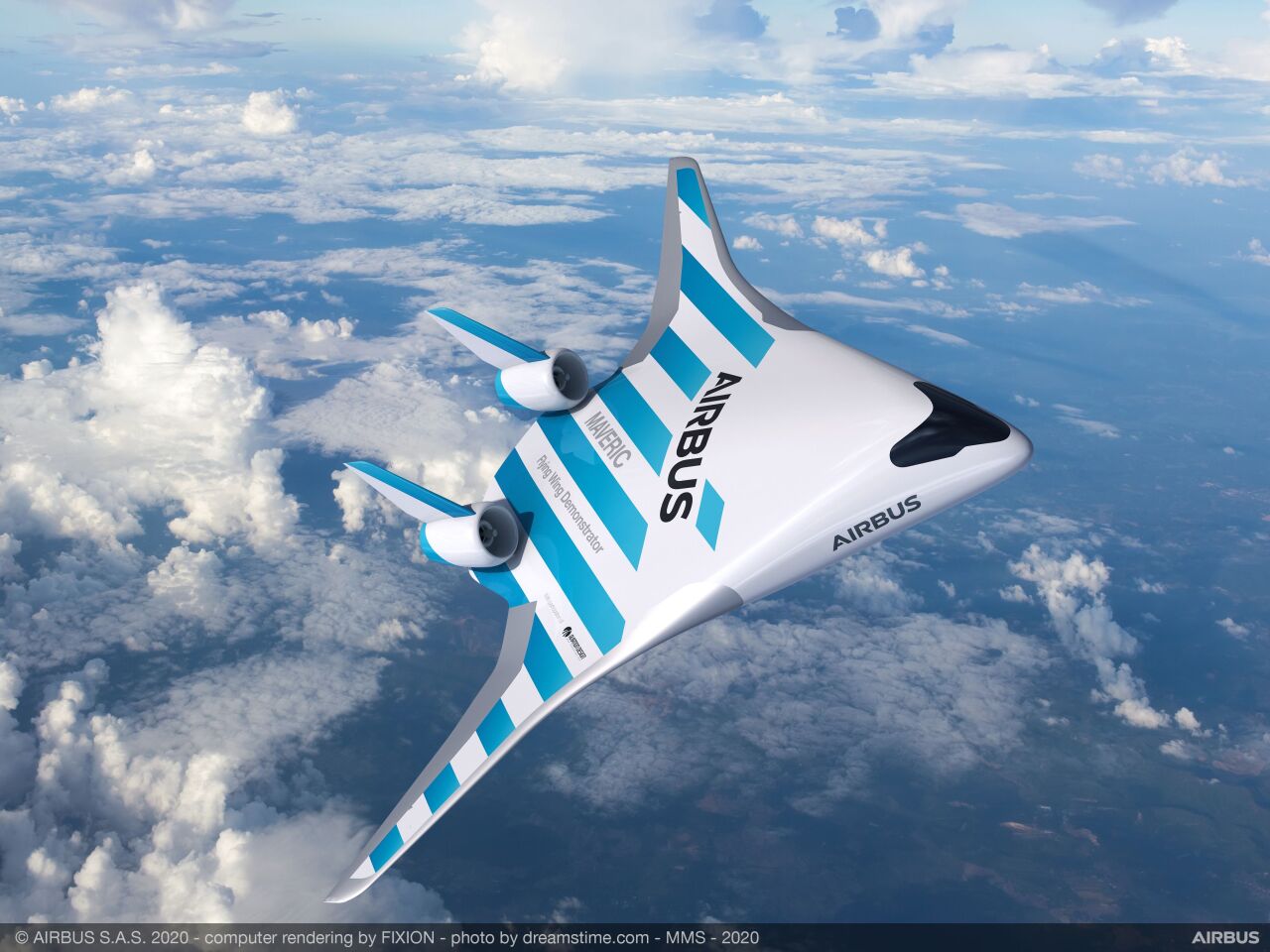At this year's Singapore Air Show, Airbus has taken the wraps off its latest Blended Wing Body (BWB) scale model demonstrator aircraft. Called the Model Aircraft for Validation and Experimentation of Robust Innovative Controls (MAVERIC), the purpose of the miniature testbed is to study propulsion and other systems for an airframe where the fuselage and wing merge into one.
The BWB concept isn't new. The idea dates back to the 1920s and over the past century there have been various attempts to use some aspects of the design. Put simply, a blended wing body is an aircraft that's halfway between a conventional airplane and a flying wing. In the case of the former, the wing and the fuselage are two distinct structures, while in the latter the fuselage vanishes completely as the aircraft becomes one giant airfoil. In a blended wing, the fuselage and wing flow into one another without any clear boundary.
The reason why the blended wing is attractive to aerospace engineers is that it has a number of distinct advantages. By merging the fuselage into the wing, the surface area and hence drag is reduced, which increases fuel efficiency. In addition, there's more room for passengers and cargo inside, so a small blended-wing aircraft could compete with a larger conventional one.

The Airbus MAVERIC demonstrator is only 2 m (6.6 ft) long and 3.2 m (10.5 ft) wide with a surface area of about 2.25 m² (24.2 ft²). It has two ducted fans in the rear stabilizers, which would be replaced with jets in a full-sized version that would also use a fly-by-wire control system. According to the company, the design has the potential to reduce fuel consumption by up to 20 percent compared to current single-aisle aircraft. The current demonstrator first flew in June 2019 and will continue testing this year.
In addition to the MAVERIC, Airbus also released design concepts for a future BWB passenger airliner. One drawback of such aircraft is that they're more like passenger ferries than coaches when it comes to seating, with most of the passengers seated deep inside and far from any windows. To cut down on claustrophobia, the renderings show an interior with not only a distinctly open and cheerful layout, but also wall-mounted infotainment displays that can turn into virtual windows to show the outside world.
"Airbus is leveraging emerging technologies to pioneer the future of flight," says Jean-Brice Dumont, EVP Engineering Airbus. "By testing disruptive aircraft configurations, Airbus is able to evaluate their potential as viable future products. Although there is no specific timeline for entry-into-service, this technological demonstrator could be instrumental in bringing about change in commercial aircraft architectures for an environmentally sustainable future for the aviation industry."
Source: Airbus












